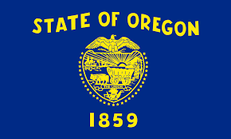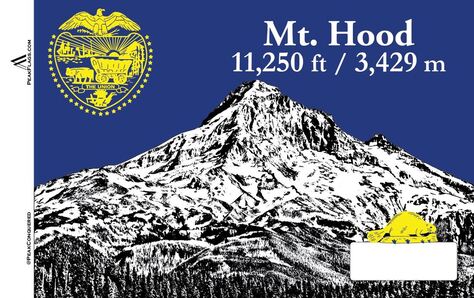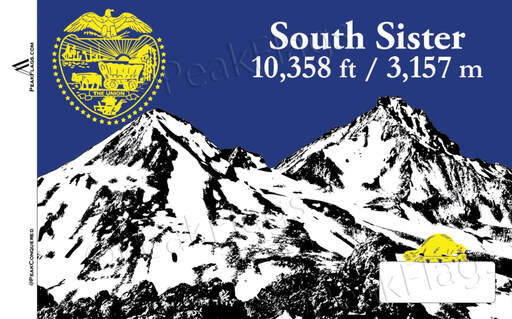
Oregon is 295 miles (475 km) north to south at longest distance, and 395 miles (636 km) east to west. With an area of 98,381 square miles (254,810 km2), Oregon is slightly larger than the United Kingdom. It is the ninth largest state in the United States. Oregon's highest point is the summit of Mount Hood, at 11,250 ft. (3,429 m), and its lowest point is the sea level of the Pacific Ocean along the Oregon Coast. Oregon's mean elevation is 3,300 ft. (1,006 m). Crater Lake National Park, the state's only national park, is the site of the deepest lake in the United States at 1,943 ft. (592 m). Oregon claims the D River as the shortest river in the world, though the state of Montana makes the same claim of its Roe River. Oregon is also home to Mill Ends Park (in Portland), the smallest park in the world at 452 square inches (0.29 m2).
Western Oregon's mountainous regions, home to three of the most prominent mountain peaks of the United States including Mount Hood, were formed by the volcanic activity of the Juan de Fuca Plate, a tectonic plate that poses a continued threat of volcanic activity and earthquakes in the region. The most recent major activity was the 1700 Cascadia earthquake. Washington's Mount St. Helens erupted in 1980, an event visible from northern Oregon and affecting some areas there.
Western Oregon's mountainous regions, home to three of the most prominent mountain peaks of the United States including Mount Hood, were formed by the volcanic activity of the Juan de Fuca Plate, a tectonic plate that poses a continued threat of volcanic activity and earthquakes in the region. The most recent major activity was the 1700 Cascadia earthquake. Washington's Mount St. Helens erupted in 1980, an event visible from northern Oregon and affecting some areas there.
Mt. HoodOregon's highest point is the summit of Mount Hood, at 11,250 ft. (3,429 m).
|
South SisterSouth Sister is the tallest and youngest, geologically speaking, having the most recent volcanic activity of the Three Sisters.
|


